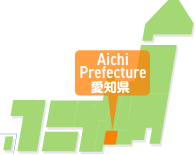Learn how to express pain in Japanese! How to convey pain effectively

Hello, this is Kano from JAC (Japan Association for Construction Human Resources).
One thing you may be worried about when living in Japan is getting sick or injured.
There are many words in Japanese to express pain.
Being able to use words that reflect your pain makes it easier for others to understand your symptoms.
This time, we will introduce some Japanese expressions for pain.
Please feel free to use this as a reference.
Learn Japanese expressions of pain
In Japanese, there are many words to express pain.
Using words that match the type of pain you experience can make it easier for you to communicate to others what is causing your pain and how bad it hurts.
There are several words to describe the pain:
- びりびり(BIRIBIRI)When you feel numb
- じんじん(JINJIN)When there is a stinging pain
- ちくちく(CHIKUCHIKU)When you feel a stabbing pain
- ひりひり(HIRIHIRI)When the burning pain continues
- きりきり(KIRIKIRI)When there is a tightness-like pain
- ずきずき(ZUKIZUKI)When you have a headache or toothache
We will introduce how to use words to describe pain for each part of the body.
head
When you have a headache, you use this phrase.
- My headずきずき(ZUKIZUKI) Yes: When you feel pain as if your temples (right next to your eyes and right above your ears) are being squeezed
- My headがんがん(GANGAN) Yes: When your whole head hurts
- My headぼーっ(BŌ) When you feel dizzy due to having a fever, etc.
neck
When you have a pain in your neck, you use these words:
- Neckがちがち(GACHIGACHI) The neck isばきばき(BAKIBAKI) When your neck muscles are stiff and heavy
Back and waist
You can use these phrases when you want to say, "My back or waist hurts."
- The back (waist)ぴきっ(PIKI) When you feel a sudden, electric shock-like pain for just a moment.
- The back (waist)ずーん(ZŪN) When pain lasts for a long time
stomach
When you have a stomach ache, you use this phrase.
- My stomachきりきり(KIRIKIRI) Stomach cramps (SHIKUSHIKU): When you feel a pain that feels like your stomach is being squeezed
- My stomachちくちく(CHIKUCHIKU) Yes: When you feel a pin-and-needle pain
Arms and hands
You might say this when your arm or hand hurts.
- Arms (hands)びりびり(BIRIBIRI) Yes: When you feel numb
- Arms (hands)じんじん(JINJIN) Yes: When there is a burning pain
- Arms (hands)ちくちく(CHIKUCHIKU) Yes: When you feel a pin-and-needle pain
feet
When your leg hurts, you use this phrase.
- My legsびりびり(BIRIBIRI) Yes: When you feel numb
- My legsじんじん(JINJIN) Yes: When there is a burning pain
- My legsちくちく(CHIKUCHIKU) Yes: When you feel a pin-and-needle pain
- My legsぱんぱん(PANPAN) When your legs are stiff from walking too much
How to communicate pain effectively

Knowing how to describe your pain can help you communicate your symptoms to others.
However, sometimes you just can't think of the right words.
In such a case, please try the following methods.
- Use your finger to point out where it hurts
- Tell me when it hurts
- Pain intensity is expressed as a number (0 = no pain, 10 = very painful)
- Tell them if you can sleep through the pain or not
- Tell them how long the pain will last
- Let me know if the pain gets any less
Example 1) I've had a stomach ache since last night. It was so painful that I couldn't sleep.
Once it starts to hurt, it hurts for about 10 minutes. If I sleep on my side, the pain is less.
The pain is about 7 when it's at its worst, and about 2 when I'm lying on my side.
Example 2) This morning, when I was lifting some heavy steel beams at the construction site, I suddenly felt a pain in my lower back here (pointing to the painful area).
It hurts so much I can't walk, it hurts when I stand or sit.
If the pain is severe, call an ambulance.
For information on how to use an ambulance, please see "Guide to using ambulances for foreign visitors to Japan | Emergency Useful Portal Site | Fire and Disaster Management Agency, Ministry of Internal Affairs and Communications" is a detailed introduction.
Guide to using ambulances for foreign visitors to Japan | Emergency Useful Portal Site | Fire and Disaster Management Agency, Ministry of Internal Affairs and Communications
*Supported languages: English, Chinese, Korean, Italian, French, Thai, Vietnamese, Tagalog, Portuguese, Nepalese, Indonesian, Spanish, Burmese, Khmer, and Mongolian.
It's a good idea to check it out just in case.
Summary: Using the many "expressions for pain" available in Japanese makes it easier to communicate symptoms
In Japanese, there are many words to express pain.
Using pain terms can help you communicate your symptoms to others.
If it's difficult to express in words, you can also use your finger to show where it hurts or tell them when it will hurt.
Please use this as a reference when communicating pain due to illness or injury.
About us, JAC
JAC(Japan Association for Construction Human Resources)is an organization that supports all Specified Skilled Workers working in the Japan construction industry. We work with companies that accept Specified Skilled Workers to create a work environment that is easy for everyone to work in.
We're also taking the exams you need to become a Specified Skilled Workers!
And JAC has received many requests for job offers from companies that want Specified Skilled Workers to work for.
Specified Skilled Workers Wanted! Job Listings
For those of you who want to work in Japan using Specified Skills, we are introducing jobs that match your occupation and aspirations!
If you have any problems, please feel free to contact us!





